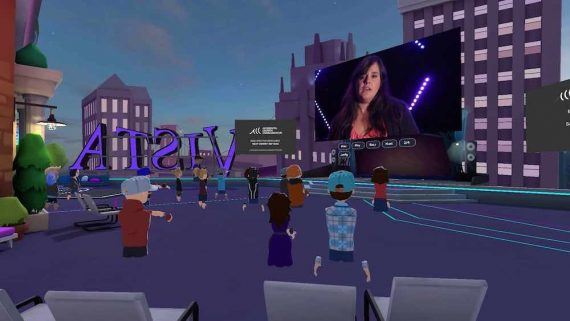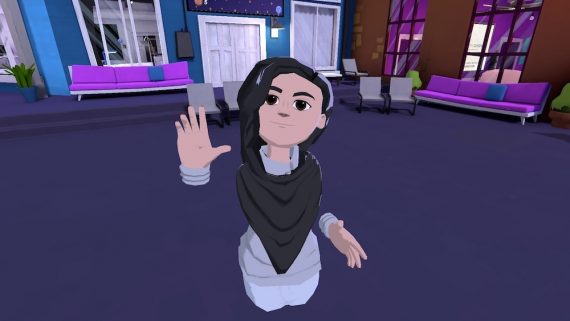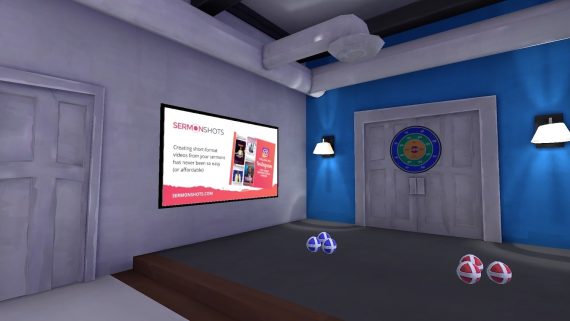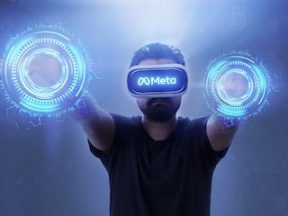Attending conferences in the metaverse is a novelty for many folks. But those events have been going on for a while and will become common as technology advances and more people are familiar.
I recently hosted a metaverse conference to train church communicators.
In this article, I will share my experience and what I learned.
How It Works
The metaverse is a digital representation of the universe, accessible in two dimensions from a computer alone or three dimensions when adding a headset.
It’s not a standalone app or game but a network of virtual worlds that run continuously and function similarly to real life.
In-person conferences are returning, post-pandemic. But many require extended (and expensive) travel. The metaverse brings to conferencing the ability to gather “in-avatar” in an immersive experience without buying an airplane ticket or adjusting your hair.
Church Communicator Conference
My event, called “The Church Communicator Conference,” occurred last week. It lasted two days. We had over 200 worldwide registrants and 50 attendees. Admission was free for basic access; premium access included headsets, recordings of the discussions, and gifts from sponsors.
Marketing (for attendees) was mainly via my Facebook group, “Accidental Church Communicators,” and similar other groups.
We hosted the conference on AltspaceVR, a free virtual-reality platform where hosts can decorate and personalize their own digital universe. Once they had created an account, attendees could dialog with other participants, including speakers and the host (me) in real-time.
The conference had 14 speakers and four panelists. All could easily share multimedia and engage with attendees.

Speaker presentations were pre-recorded. Attendees could listen anytime.
Pre-recorded sessions. For two days, we displayed pre-recorded sessions on a virtual screen while speakers answered questions from the audience in avatar mode in real-time.
Sound quality. AltspaceVR amplifies voices when speakers address the entire room. A simple click allowed someone’s voice to become louder so the whole room could hear a question. Speakers could step onto a virtual “stage,” a fictitious boundary preventing disruptions.
Chat one-on-one. AltspaceVR allows for natural, one-on-one conversations to take place. Sound increases as you approach a person and reduces as you move away.
Attendees opted for real-life avatars. In the metaverse, you can be whatever you like. But for business events such as our conference, many attendees used their real names and adopted avatars with actual personal features such as hair color.

Many attendees used their real names and adopted avatars with actual personal features, such as this example from the author, the conference host.
Event rooms. Digital event rooms are customizable. Our conference had separate rooms where a customizable “sky” could display as day, night, or outer space with just a few clicks.
Emojis indicate virtual applause. Besides the pre-recorded sessions, discussions occurred where each panelist and the host were in avatar mode. A clapping or heart emoji would encourage speakers during insightful moments.
Advertising opportunities. The rooms displayed sponsors’ advertising, such as banners, slides, outdoor signage, and on-demand videos that anyone could view.

The rooms displayed advertising, such as this sign from SermonShots, a sponsor.
Learning Curve
Understanding virtual etiquette and the technical steps to hold a metaverse event takes time. Many first-time users found the experience perplexing in the beginning.
The standard templates for spaces are beautiful and resourceful. Still, hosts who want more can hire a designer on, say, Fiverr to create a customized world, which could include a campfire, a theater, a movie room, or a gathering table, as examples.
Ecommerce?
Imagine a world with virtual stores that are always open, and users can visit any time. Product videos could be available on demand. Merchants could meet clients 24/7 in avatar mode and display replicas of products in 3D.




